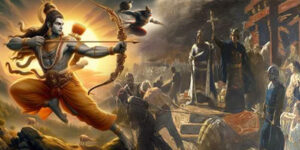According to a new book, there were glaring cases of Hindus living in Muslim areas suffering terribly, which were purposely overlooked by the human rights activists.
A group of human rights activists and academics, both at home and abroad, have once again tried to rake up the 2002 Gujarat riot episode, with the aim of reducing some of the luster that Modi has acquired on the global stage.
But a new book, Gujarat Riots: The True Story, tries to demolish the charge of Modi government’s complicity in the riots with credible evidence and exposes some of the alleged facts stacked up against Prime Minister Narendra Modi. Written by a 27-year-old year researcher from Nagpur, MD Deshpande, and published last December by Partridge Publication of India, the book is quite insightful for one who wants to read with an open mind.
 |
By highlighting figures of the numbers of Hindus and Muslims killed in police firing, and those rendered homeless, the author makes the point that it was not so much of the “anti-Muslim riots” as it was made out to be; and, it was certainly not a “pogrom”. According to Deshpande, against one lakh Muslims rendered homeless, the number of Hindu homeless was around 40,000. And, as many as 254 Hindus died in the riots against 790 Muslims. And only 127 persons were missing in the riots. He quotes these figures from the records of the then UPA government at the Centre.
According to Deshpande, there were glaring cases of Hindus living in Muslim areas suffering terribly, which were purposely ignored by the human rights activists and the media.
By marshaling figures of the preventive arrests made by the police and giving the exact timing when the Modi government called the army on February 28, 2002, Deshpande seems to have produced evidence to say that there is nothing more the Gujarat government could have done.
Here the facts he produces pertaining to the Gulbarg Society massacre in Ahmedabad, in which 69 people were killed by Hindu mobs, including Congress leader and former MP, Ehsan Jafri, are startling. By giving factual details of how police tried to save Gulbarg’s Muslim residents despite the massive Hindu mobs attacking them, Deshpande says at least 110 more people would have lost their lives that day, and the figure of those killed would have been around 180, had the police not taken action.
He marshals the figures of the 1969 and 1985 Ahmedabad riots to bring credibility to his argument. These were two of the three big riots in Gujarat before the 2002 episode. The book says there were just three convictions in each of the two previous riots, compared to almost 443 (this figure is till 2012; more convictions have taken place after that) in the 2002 case.
Then the author focuses on the work done by the Special Investigation Team (SIT) appointed by the Supreme Court to probe the 2002 riots and cites its findings to prove how the now dismissed IPS officer Sanjiv Bhatt was taking instructions from human rights activists and Congress leaders to create false evidence to nail the then Narendra Modi-led state government.
He also shows how the SIT found no truth whatsoever in Bhatt’s claim that he had attended the post-Godhra train burning meet on the evening of February 27 at then CM Modi’s residence and how Modi had allegedly “given orders” to the authorities to “go slow on the Hindu rioters”.
But more interesting are the facts he brings on the table to nail the allegations made in the petition of Ehsan Jafri’s widow, Zakia Jafri. Deshpande cites the SIT findings to show that the she was absolutely unaware about her own petition’s contents when examined by the SIT in November 2008.
 |
| A Muslim woman pays tribute to the victims of Gulbarg Society massacre. [Photo credit: Agencies] |
The SIT, he says, found that the petition had over one dozen factual errors and was drafted by some one else who had not even informed Jafri about its contents but had merely asked her to sign. Deshpande also produces Zakia’s first statement before police made on March 6, 2002, less than week after the Gulbarg massacre, which is the antithesis of her later petition. In this statement, Zakia gave a clean chit to the police and said that many lives were saved because of the police action.
The SIT, Deshpande says, found that Babubhai Rajput, who had been named in Zakri’s complaint as one of the 63 accused, did not exist. Plus, two IPS officers, who tried to help the Muslims victims of the 2002 riots, Rahul Sharma and Satish Varma, were named as both accused and witnesses in her petition. These names were removed from the list of accused only after Zakia’s lawyer admitted before the SIT that it was a mistake.
He also finds holes in the in the famous Tehelka sting operation-based story of the rioters where they boasted how they had partaken of the riots.
Deshpande, a computer engineer and an MBA from Jamnalal Bajaj Institute, has devoted a special chapter to present a comparative study of the action taken in the 1984 Sikh riots and the 2002 Gujarat riots. This is the most comprehensive book presenting the other side of the 2002 Gujarat episode and is based on strong evidence.
Daily O






























